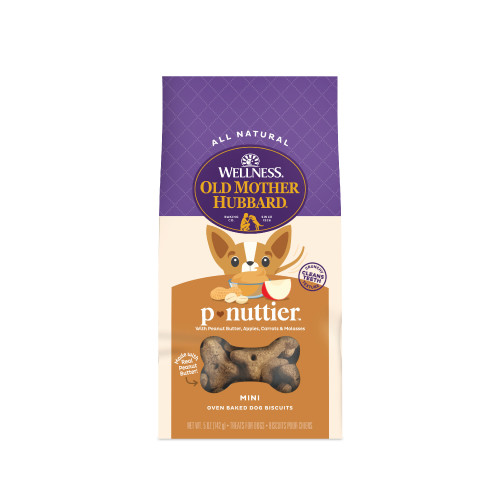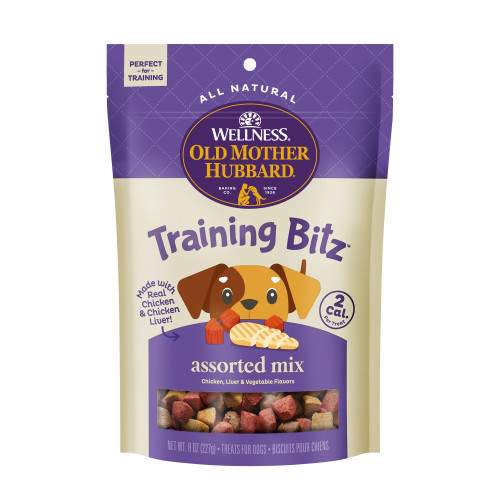January 31, 2022
7 Mistakes People Make When Using Dog Training Treats
Written by Robert Thomas of Marvelous Dogs
Training is a huge part of your dog’s development, and it should come with some form of reinforcement.
Animal organizations worldwide say that positive reinforcement, or the addition of something good or enticing to increase good behavior, is a great way to teach commands and reinforce desirable behavior. Can you guess what the most popular form of positive reinforcement is?
Treats!
Since most dogs are food motivated, treats are an easy way to influence your dog to complete commands and perform good behavior. However, pet parents can make some mistakes that can reduce their effectiveness, turning them into an undesirable or not-so-good form of reinforcement that could hinder your dog’s learning abilities.
So, I know you must be asking, what are some mistakes I may be making when it comes to rewarding my dog with treats? Read on to find out.
What Mistakes Could I Be Making When Using Training Treats For My Dog?
1. Using Low Value Treats to Reward Your Dog in High-Distraction Environments
Treats should be an exciting reward that your pups are getting for completing a task they’re trying to learn. Therefore, you should be using nice, high-quality treats to deliver this reward.
Those sad, bland little biscuit treats aren’t going to cut it! Your pup is guaranteed to get bored of their bland taste, leading to them failing to provide the reinforcement needed. However, natural treats made from vegetables and meat or ingredients such as cheese, fresh liver, bacon, etc., work perfectly as high-quality treats for training. Wellness Soft Puppy Bites, or Wellness WellBites, with flavors such as Chicken & Venison, can help in these scenarios!
These should be given in moderation and will give your pups the drive to train and complete the tasks given to them.
2. Using the Treat the Entire Time to Engage Your Pup
Marvelous Dogs, a Labrador Retriever training school, says, “treats should only be used as a guiding tool or a reward for a completed task. It shouldn’t be a bargaining tool to push your dog to train.” This is especially true for demanding pups like Labradors, but is true for all breeds!
You can mistakenly use a treat as a bargaining tool by purposefully showing them the treat in your hand as you get them to respond to a command. But, unfortunately, doing this won’t help them perform the task for the right reasons. In most cases, they’re going to do what you want just because they know a treat is involved, leading to them only performing tasks when they know they’re going to get a treat.
Instead of showing your dog, you have treats to reward them with, hide the treats with your hand or leave them in your pocket. You shouldn’t show and give them the treat until they’ve completed your command.
3. Delivering Treats Too Slowly
A mistake that pet parents can make that might cause hurdles when training with treats is giving them their treats too late. Dogs have short attention spans, so if you wait four, five, six, or more seconds before giving your dog their treat, they will have already forgotten why they’re receiving their reward.
It would be best if you strived to give your dog a treat for responding to a command or cue immediately after they’ve acted while their comprehension of what they’re being rewarded for is fresh in their mind.
4. Rewarding Your Dog in the Wrong Positions
Let’s say you tell your dog to lay down, and they successfully do, causing you to go to reward them with a treat. However, you put the treat slightly in front of your dog, causing them to have to get up to get to it.
Does this sound like a problem? Believe it or not, it is.
It would be best if you always reward your dog in the position you’re rewarding them for. Rewarding your dog when they aren’t in the position they’re being rewarded for can greatly confuse them. For example, now that you’ve rewarded your dog when they’ve gotten up, they’ll think you’re rewarding them for that action instead of them laying down on command, which isn’t the case.
To circumvent this problem, make sure you hand out the treat right in front of your dog’s face or nose so they don’t have to move a significant distance to reach it. This forces them to stay in their position and teaches them that that’s why they got a reward.
5. Rewarding Bad Behavior with Treats
Let’s say your dog gets off the leash and runs away from you, causing you to panic, frantically calling for them to come back to you. After a while of calling your dog back, they finally decide to return to your side to put their leash back on. In response, you praise them and give them a treat for coming back.
Unfortunately, you’ve just rewarded your dog for bad behavior.
Your dog didn’t come back because you called them back. They only came back because they got bored and finally decided to. So rewarding them for that behavior has just taught them that they can run off as much as they want and still get a treat for at least coming back.
If your dog does something bad, never give them a treat or reward for backtracking on that bad mistake. It’s not worth the reward.
6. Using Only Treats as Reinforcement
While treats are pretty great, they aren’t the only form of positive reinforcement that you can provide your dog to reward them.
Purposefully relying on treats as a reward system can backfire on you, leading to your pup becoming dependent on them to perform their tasks.
So, instead of constantly relying on them, you should incorporate other positive reinforcements into your training routine. This could include anything that your pup values, such as toys, affection, praise, or a simple, enthusiastic “yes.”
You also want to start to wean your dog off of rewards like treats the further you get with training them to get them accustomed to doing what you ask them to do with no other pushing forces involved.
7. Defaulting Back to Treats When Your Pup Fails to Respond to a Task
It would be best if you only used treats to guide your pup through training when you know your dog is still unfamiliar with the command you’re trying to teach them. However, if you know that your dog knows a command but isn’t responding to it because they’re distracted or stubborn, you should never go back and try to use a treat to guide them. When you do this, you are feeding into their bad behavior, and it isn’t teaching them anything by the fact that they can ignore you to get you to pull out a treat for them.
Instead of using treats as a guide, regain their attention and repeat the command. Use a leash or your hand to guide them into the right position when you do this. Then, bring them into a standing position again, gain their attention, and say the command. If your dog knows the command, they should eventually be able to do it with no guidance. Only then should you reward them.
Use Treats Wisely
Treats are an amazing form of positive reinforcement that can motivate, guide, and reward your pup for positive behavior and response to commands and cues. However, you should keep in mind that the misuse of treats with training can lead to bad behaviors and confusion on your pup’s part.
You should correct any mistakes immediately if you want to see the amazing effects of positive reinforcement in the form of treat training on your pup and their behaviors and responsiveness rate to commands.






